The hostel in Belen turned out to be a real find. It was well-built and all the services worked. There was even slow wi-fi in the rooms. One of the gripes we have had so far is that where-ever we have stayed there has always been dodgy plumbing of some sort. Admittedly we have not been staying in top quality accommodation, but every hostel/campsite has so far had leaking and scaled facilities that would be easy to fix. We chose our day-off well, as towards the late afternoon the skies darkened and there was a thunderstorm. It cleared and freshened the air.
We left Belen on the Friday under grey skies cycling through a canyon following a river. 5km out of town was the municipal campsite we had searched for when we arrived. The canyon eventually widened out into a bigger valley, but throughout the day we climbed through rocky hills of various types, many eroded into interesting shapes. We passed through a number of small communities and eventually landed in Huelfin for a late lunch. Unless you had looked at the map you wouldn’t know Huelfin existed, there were no signs for the town en route – or even when we got to the turn-off at 60km from Belen. We were wondering if the town had voted for the wrong politician but possibly there are no signs because the road has just been newly laid.
In the centre of town is a tourist office with a museum, plaza and an old church dating from 1770. There were also taps from which we could refill our water bottles. Heading north out of town we encountered ripidio for about 2.5 kms before rejoining the pristine tarmac of ruta 40. Leaving Huelfin we left the rocky hills behind and emerged into the pampas. It was the most desert-like area we had seen so far with vegetation sparse and diminutive.
The wind was behind us so we didn’t notice the 1000m climb that day. The route flattened out and Rob thought we should take advantage of the wind to get some more kilometres behind us. My rear end was protesting. The matter was resolved by a man standing next to his pick-up. When we got close he explained that the wind up ahead was really strong and that it had rocked his vehicle and it would be best for us to cycle on to a house 20 kms down the road and take shelter there. We were a bit suspicious but carried on cycling and did eventually stop at a house. The road ahead turned right and would have meant we had a strong wind from the side, which would have been difficult.
At the house they immediately agreed we could camp in their backyard, which was in the lee of the wind. We were immediately accosted by their many dogs and eventually a vicuna, who had managed to get loose. He showed a particular interest in the leathery bits of my shoes and gloves. Later the father and two sons turned up with a baby lamb. At dusk a herd of goats returned on their own from a day foraging in the pampas to their corral at the back of the house. When riding past these houses you don’t really see all the ‘stuff’ at the back. There was a small community living in this dried up area but you only see the lights from the other houses at night. We had done 100km that day and at some stage passed the 1000km in Argentina – a milestone.
The next morning we were wakened by the sound of goats kicking the tent as they tried to work out what it was. Fortunately none of them thought to find out if it was edible. After thanking our hosts we set off again. For the first few kilometres the wind was with us, then it died altogether. We wended our way through some more rocky hills following a river and then hit a headwind. What should have then been some fast descent turned into a slow ride that we mostly had to peddle hard. I was just glad we had gravity on our side. There were a number of small communities on our way into Santa Maria, there was plenty of greenery and signs of viticulture. The wind slackened a bit but never left us.
In Santa Maria we sought out the municipal campsite our depressed German cyclist had told us about – more dodgy plumbing but for 2 Euros a tent I suppose I shouldn’t complain. We had hot water and were out of the wind. He had warned us that he had stayed there at the weekend and it had been very loud. Unfortunately it turned out to be a Saturday when we stayed and there was loud music playing until at least 6am. Not from fellow campers but from the locals having a disco in the field next door. The sound of their mopeds racing up and down the road added to the sound effects. No more municipal campsites on weekends.
Santa Maria did not want us to leave. When we got to the edge of town there was a perfect tarmac road signposted to Tucaman. We wanted to head to Cafayate on the ruta 40. Rob consulted the map and eventually we found a dirt road heading out of town that a local couple confirmed was the ruta 40. Somehow the tarmacking work had stopped here. We had to cycle through a dried up river bed and wondered what the locals do in winter, when there is water in it. After nearly 30 kms we reached tarmac again. By this time the wind was picking up. We passed the important archaeological site of Quilmes but the 10 km round trip seemed a bit much when we had another 40 ahead of us. (One of the disadvantages of cycle-touring). We would have had to walk around separately so one of us could keep an eye on our luggage. We were also aware of the increasing wind.
This was a day of bus shelters. We had our coffee break in one and then our lunch. They protected us from the wind, were something to lean the bikes against and a sign of coming into an increasingly more populated and developed area. This was also evident from the small communities we passed en route and the increased greenery surrounding them. Eventually the wind got the better of us and we agreed to stop at the next town called Tolombon. We found a ‘hostal’ there and although rather more than our usual budget decided we had no option. It was in peaceful surroundings and made a huge contrast to the night before. There was a comfortable bed, large functioning private bathroom and outside a garden with lilies and roses. While we were signing in our hosts offered us a glass of wine and some sultanas – the latter as if they were some delicacy –and they still had their pips in! It is true that we have not seen dried fruit in the shops much – surprising considering the amount of grapes grown here.
The next day we completed the final 16km into Cafayate. The road lined on either side with acres of vineyards. Wine is big business here and there are many bodegas offering wine tasting and tours by bike through the vineyards. We passed one area not yet cultivated but it brought to mind just how much work is involved in creating a vineyard from the pampas. The area had seemingly been sprayed to kill off much of the bush, but there was still some huge boulders left and lots of other stones and scrubby bush.
For once we didn’t have to look for a campsite, there were three as we entered the town boundaries. We chose a private one this time with a sign saying there should be quiet after midnight!
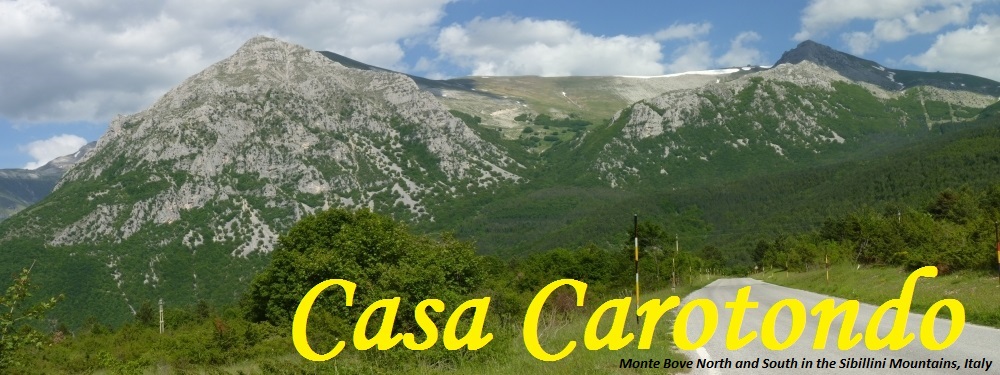
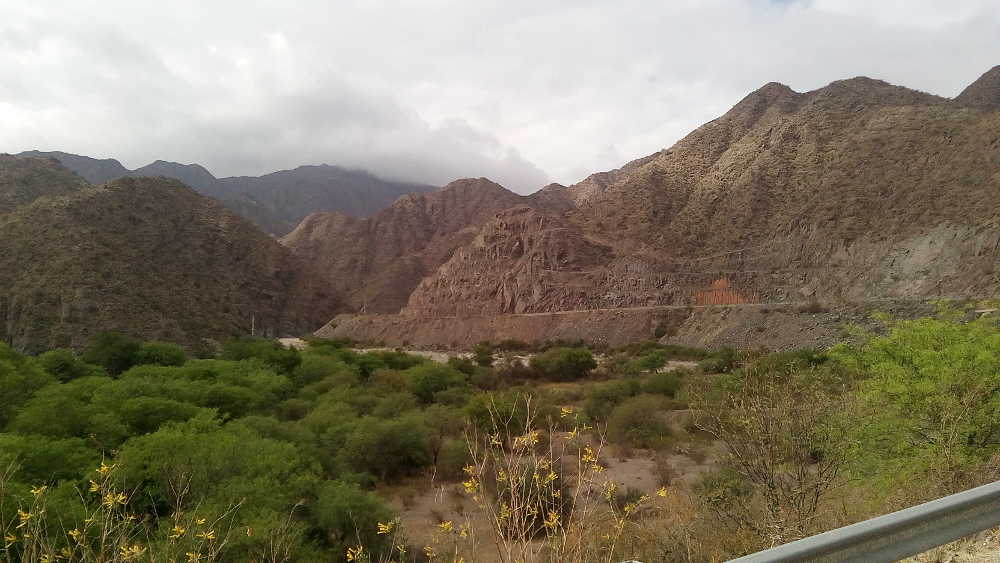
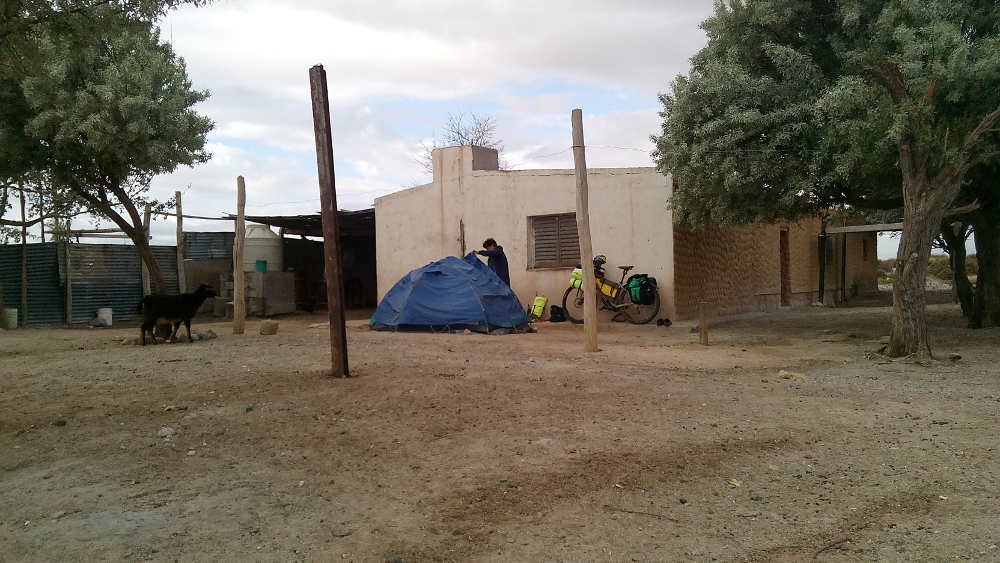
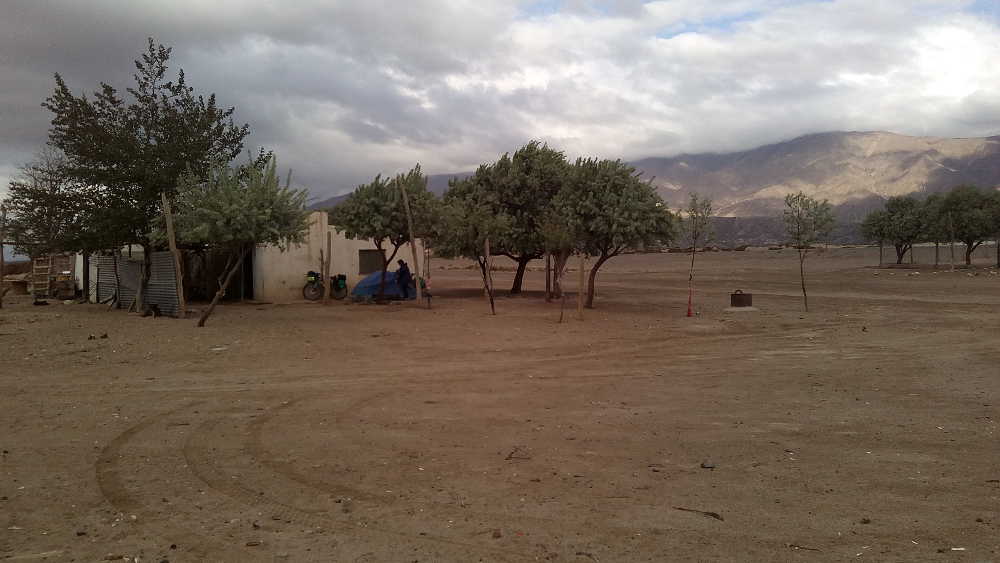

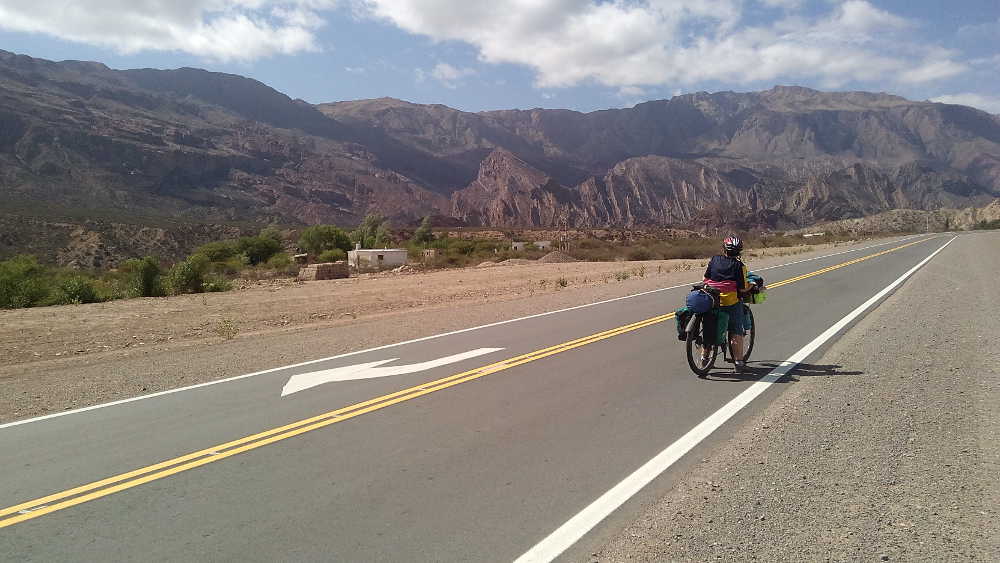
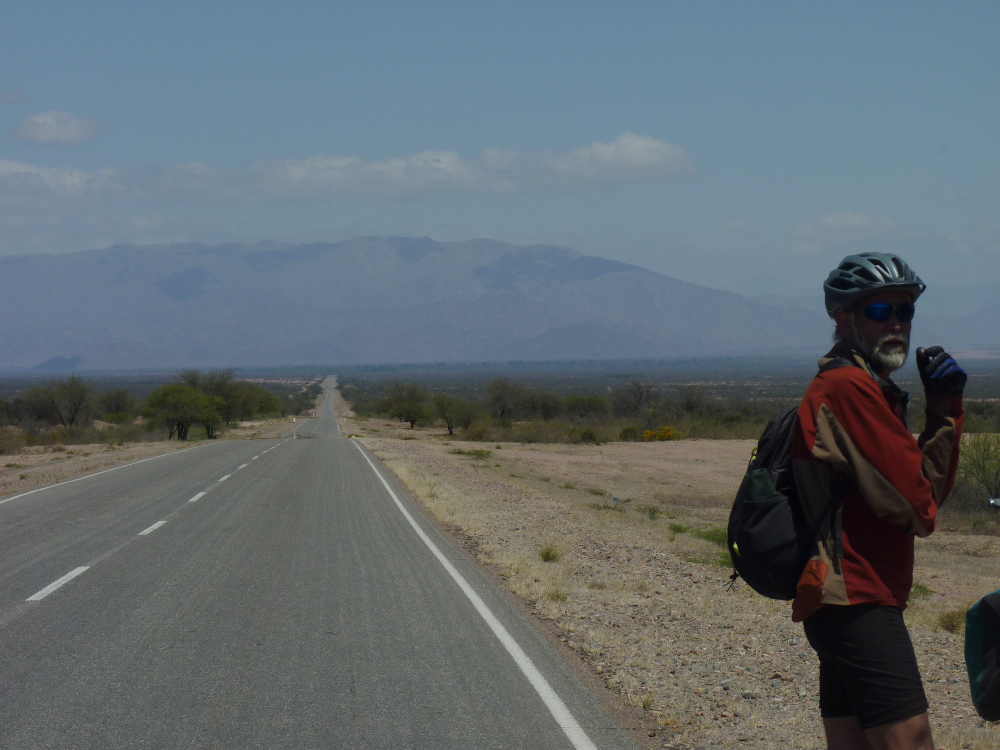
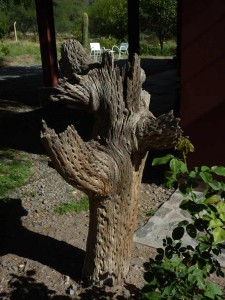
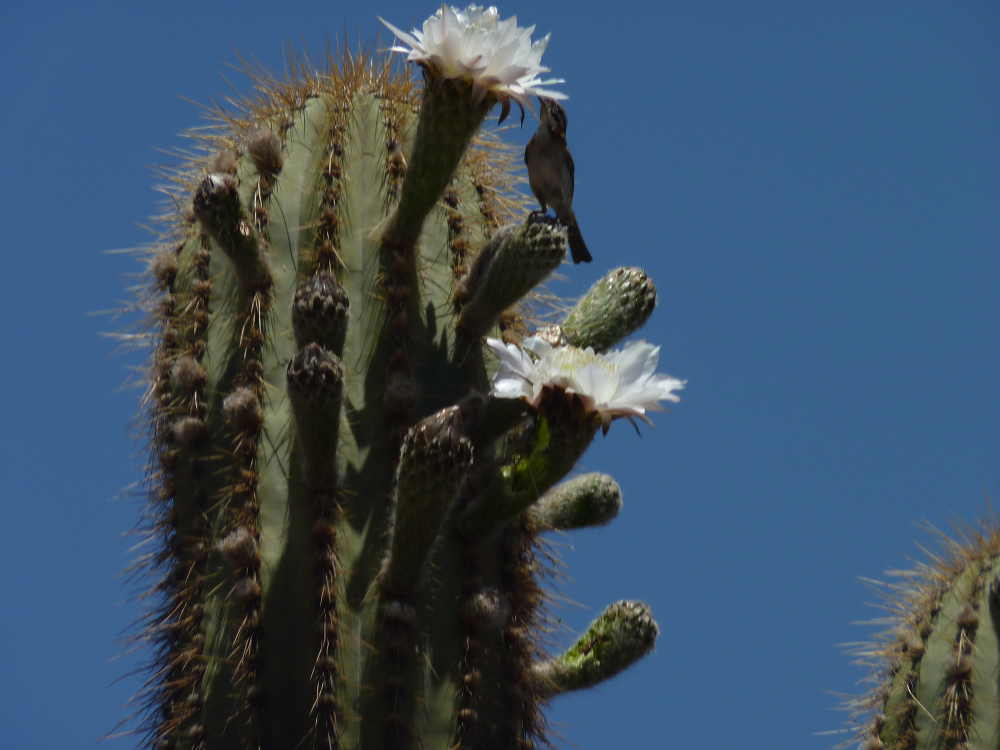
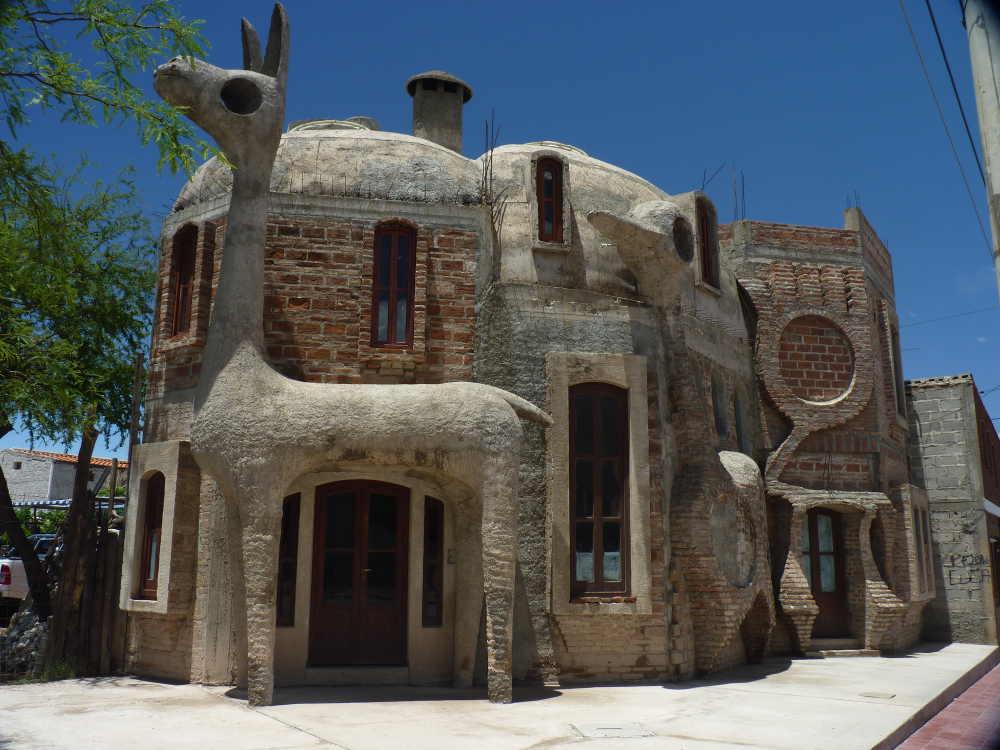
wow ..lovely pics, how may k.ss amazing, love the house must get a doorway like that…getting chilly here, winter is on its way..you both look like your enjoying it although am sure your knackered each evening…keep going
loving the blogs…. J xx
Was sagen denn all Ihre Körperteile zu all den Aufs und Abs in der Landschaft, zu den nicht gerade kurz gewählten Tagesetappen, den nicht immer komfortablen Nachtlagern usw. ? Rufen sie “Casa Carotondo :'(” oder “durchhalten :-)”? Weiterhin toi toi toi und viele Grüße – Renate & Michael
Hallo Renate und Michael,
Wir sind noch am leben! Wir sind zur Zeit in Bolivien und haben eine Pause vom Radfahren gemacht. Morgan geht’s los wieder nach Chile.
Viele Gruesse von Vanessa und Rob